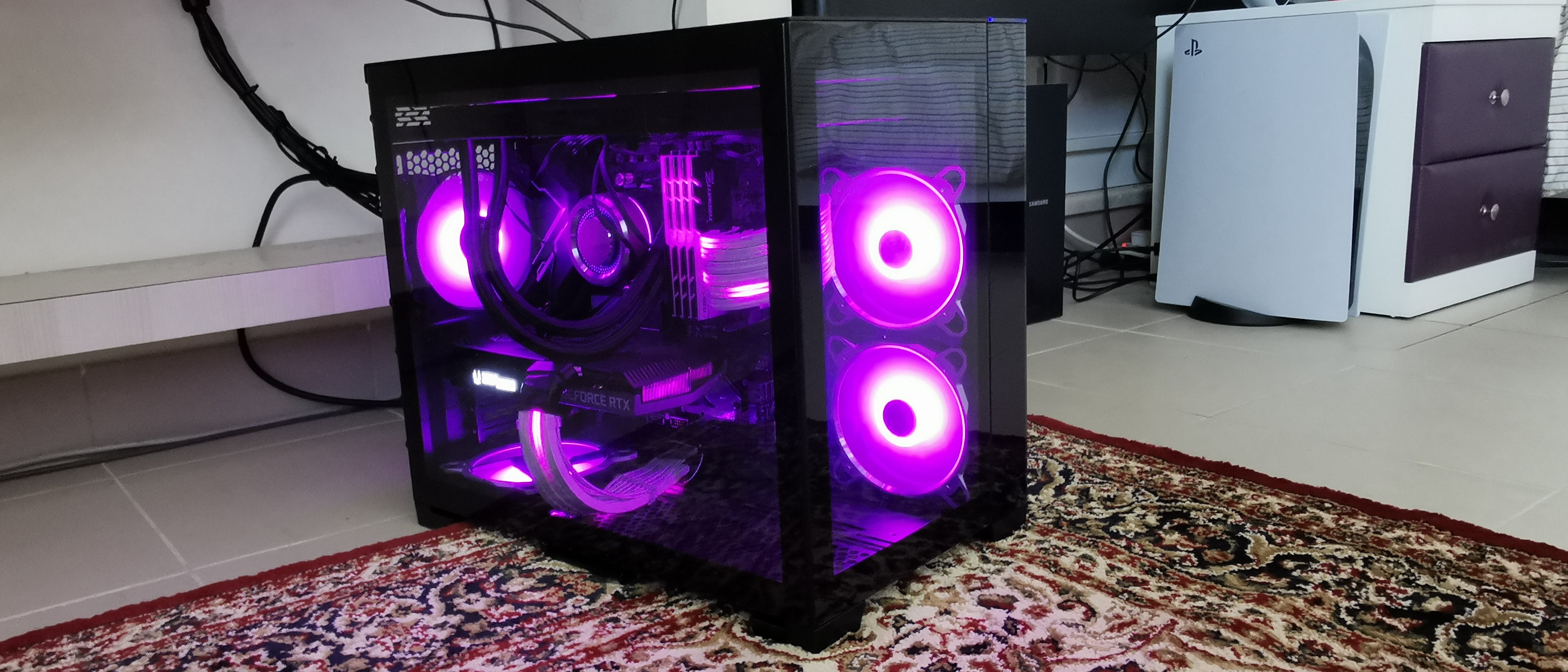TechRadar Verdict
For curious enthusiasts, the Lian Li O11D Mini is a great case to tinker around it. Its smaller footprint means that you have to be wise about what components you’re putting in, but the end result is a great PC case that can change with your future PC needs
Pros
- +
Easy to reconfigure
- +
Good radiator and water cooling options
- +
Excellent build quality
Cons
- -
Acrylic plate near power button
- -
Bottom air filter needs a rework
Why you can trust TechRadar
Two-minute review
We’ll say it now – the Lian Li O11D Mini might be the most fun we’ve had with a PC case. It’s the smaller sibling to the Lian Li O11D, but despite its smaller size the company has made this their most considerate case design yet. There’s a lot of room inside for components and cooling options, and it’s generally quite easy to get to each section of your build.
Throw in the optional vertical GPU mount and water cooling and you’ve got a fantastic looking system that you can really spend hours on tweaking and looking perfect. The O11D Mini is a case that grows with your needs, so if you want to move from an ATX build to a mATX with more cooling options, the flexibility all lies behind a couple of thumb screws.
There is still a certain degree of planning that comes with this case – it’s not as simple as grabbing all of your existing components and chucking them inside. There are size limits to what can fit comfortably in the O11D Mini, so you’ll want to spend some time researching if your current components can fit before you make the jump to this pint-sized wonder.
Despite the great look and build quality, there are a few design choices that irk us. The acrylic part near the power button is certainly one of them, as is the bottom filter which sticks out when the case is placed on a desk. For a case that’s meant to showcase your build in the best possible light, small things like this are hard to ignore.
These points aside however, there’s a fantastic amount of flexibility in the O11D Mini, and its price tag makes it accessible to pretty much anyone looking for a great-looking PC build. We’re fans of its ability to literally grow or shrink based on what components you’re using, so if you’re in the market for a PC case that can last through several upgrades, this is the one to beat.
Price and availability
The Lian Li O11D Mini is priced at $119, available at most online sites such as Amazon and Newegg.
Design
The O11D Mini comes in a deceptively large box, but upon unpacking everything you’ve presented with a much smaller case that expected. There are handy guides for showing how the case can morph into various setups, and that’s about all.
What makes the O11D Mini so unique is that it’s flexible enough to accommodate a variety of builds. If you just want to build up a decent ATX build with a simple CPU cooler and tons of storage, this case will serve you well. If you prefer to drop to an mATX build with a powerful GPU and more cooling options, that can be done as well. Fancy swapping your AIO for a more challenging water-cooling setup? That can be yours as well – the true versatility of the O11D Mini is one that should be celebrated.
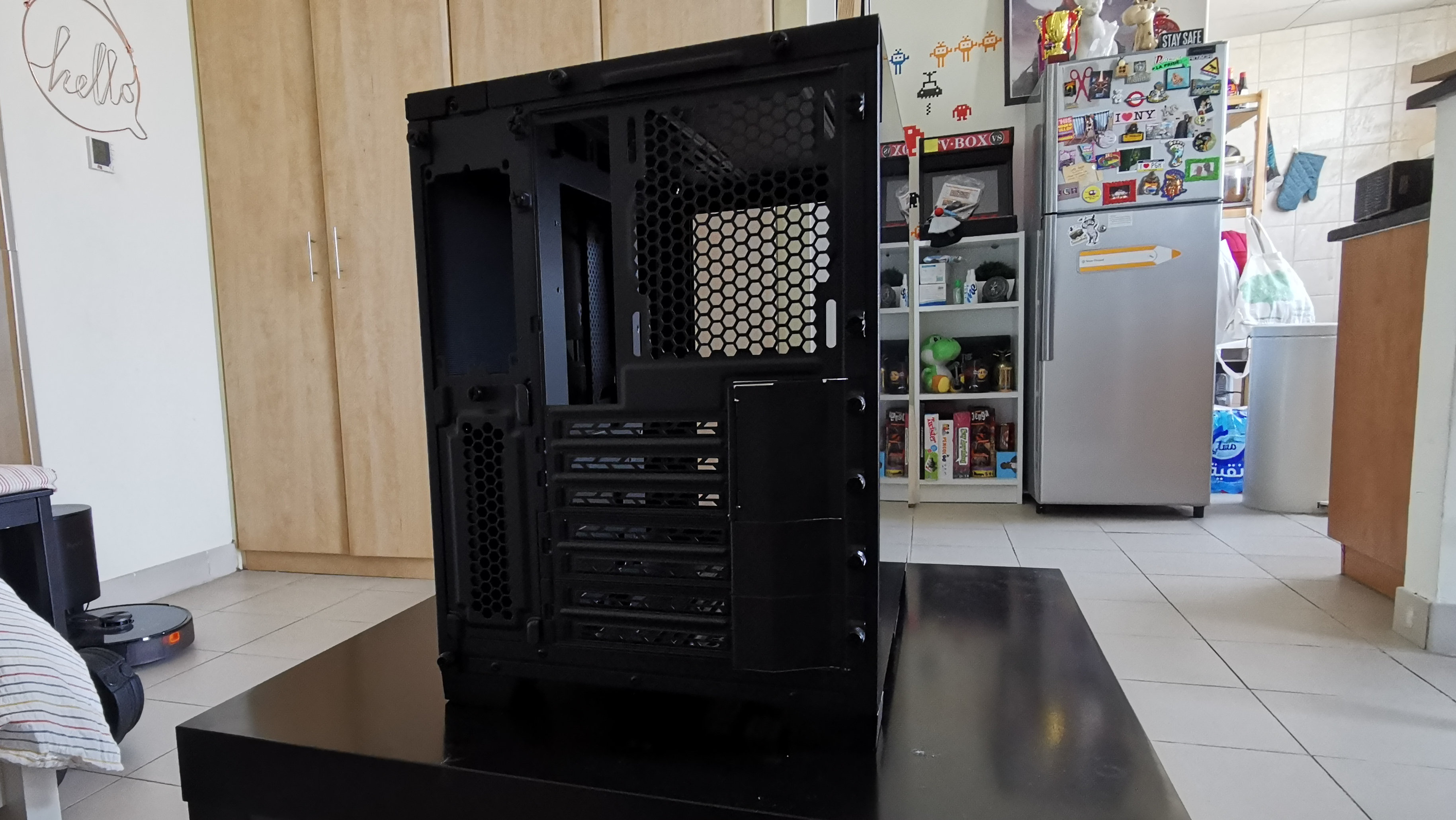
The front and side panels are made of glass, while the rest of the body is made from brushed aluminium. The finish is excellent, and this case really looks premium, whether you choose it in black or white.
At the top you’ve got your connectivity options in the form on two USB Type-A ports, one USB Type-C port, headphone jack, and power button. The power button is framed by a light blue ring when it’s on, which also flashes red to indicate HDD activity.
One thing we didn’t like here was the fact that the O11D Mini has an acrylic fitting that sits flush with the ports. This is a nightmare to deal with, as the acrylic is sure to be scratched by fumbling around when trying to plug in USB devices. We really wish that Lian Li had just continued the aluminum finish to extend to the ports as well, just to increase the case’s durability.
There are no fans included in this case unfortunately, so make sure you've got enough fans in your current or planned build to accommodate cooling accordingly.
Features
The versatility of the O11D Mini truly begins once you spin it around and examine the rear panel. The number of slots available can be easily changed depending on your motherboard configuration, so you can easily go from a 3 to 5 to 7 slot setup just by moving the plates around. The user manual is very clear in how to go about this, so it isn’t difficult or confusing at all.
The O11D Mini supports mini-ITX, micro-ATX, ATX, and E-ATX motherboard sizes. and up to 9 fans to cool the chassis. If your motherboards needs more support (like our ATX did), there’s an extra plate that fits inside the case and easily bolts on.

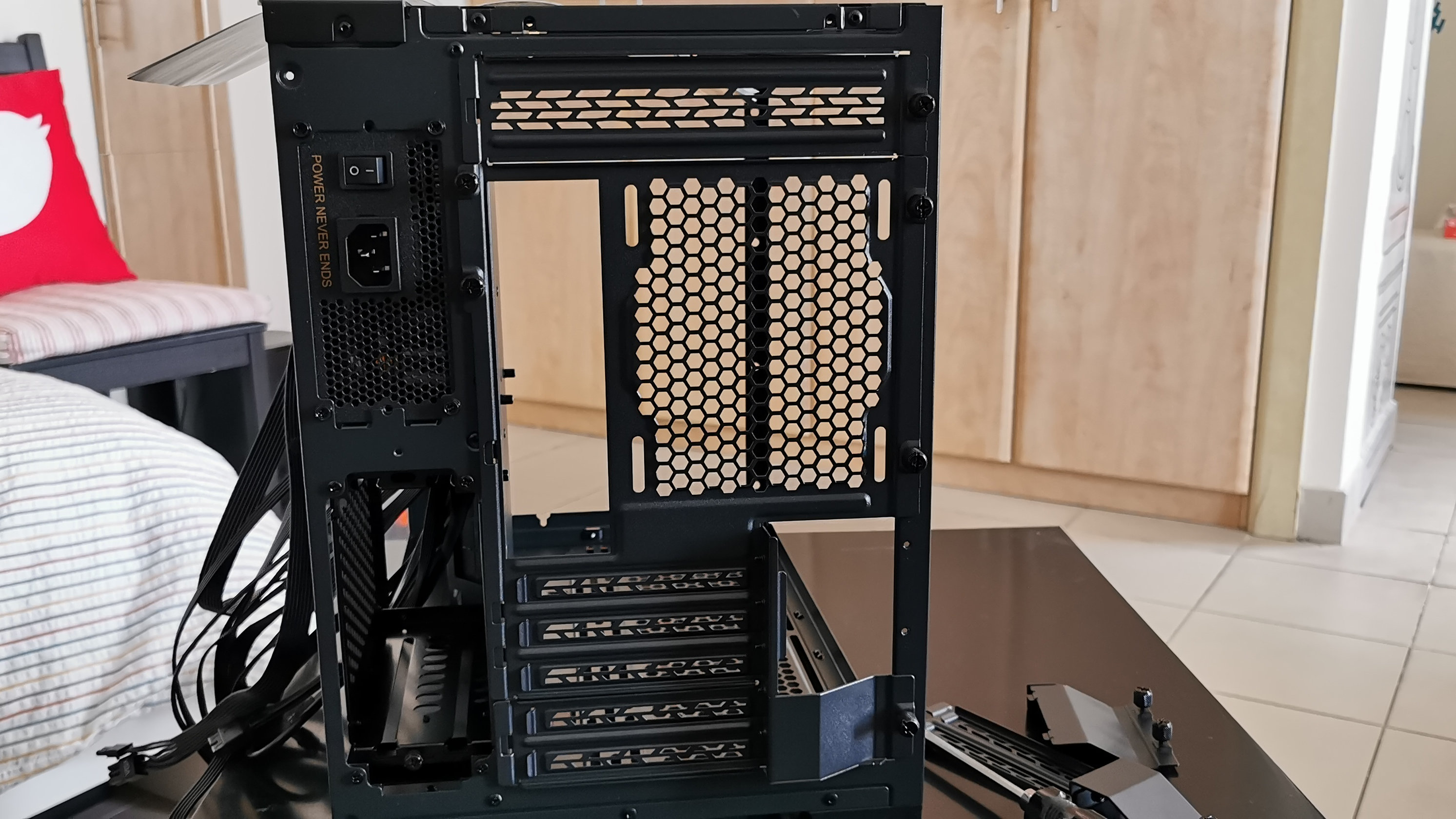
When it comes to AIO support, the O11D Mini can fit a max 360mm radiator at the top or bottom, or a 280mm radiator on the side. Any other free spaces can be accommodated by either 120mm or 140mm fans to keep things cool.
Speaking of cool, the O11D Mini can draw in air from either the side, top, or bottom, depending on how you want to configure your fans. Each section has its own magnetic dust filter as well, so it’s easy to remove and clean when necessary. The only thing we don’t like is the bottom filter – its handle isn’t visible when the case is on the floor, but if you’re putting this case on a desk you’re going to notice the filter, which slightly spoils its sleek aesthetics.
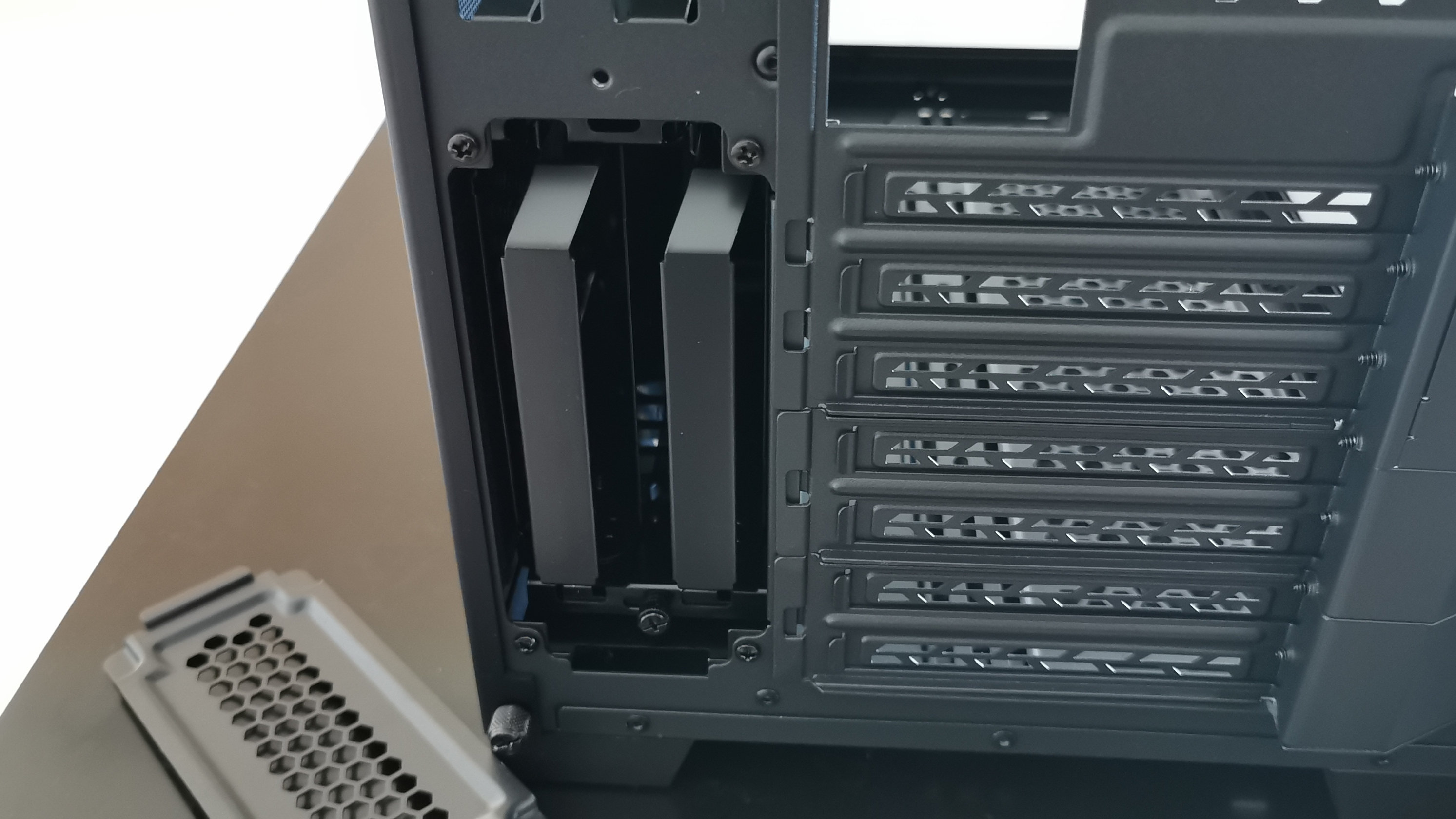
The O11D Mini features a dual chamber design, with ample space behind the motherboard to hide away cables as well as to mount SSD drives. At the back you’ve also got two full-sized HDD slots, which can be made as hot-swappable drives with a third-party kit. It can also be removed entirely to accommodate a second PSU (with another optional kit), or just be used as a space to tuck away cables. There’s also a GPU kit that you can purchase to mount your GPUs vertically instead, however the drawback is this kit uses a PCIe 3.0 interface, rather than 4.0.
Performance
Because of its compact size, the O11D Mini only uses SFX power supplies, so you’ll need to keep this in mind when setting up your build. We opted to use FSP’s recently released Dagger Pro 850W to help power everything.
Despite being deceptively small, the Dagger Pro 850W is a pint-size beast, but comes with powerful output - especially the +12V single-rail that offers VGA cards full power individually. The fully modular and all-black cable design makes for a neat and polished look in this compact case, while not compromising on airflow. The PSU also uses Japanese electrolytic capacitors for maximum reliability, and best of all you get an ATX plate included, so if you'd like to use this PSU in an ATX build at a later date, you can. It's also equipped with a 92mm fan to stay super quiet for most of the time, which is an important thing to keep in mind when you're building in a case like the O11D Mini.
Lastly, the Dagger Pro 850W features dual CPU power connectors to support high-end motherboards, so if you want to really push your build to the limit, this PSU can hold its ground.

For installation, we positioned our AIO radiator and fans at the top, drawing hot air out of the case. We positioned two Lian Li 120mm fans on the side and one fan at the bottom to draw air in, and finally one fan on the rear to expel hot air out. If you’re installing an RTX GPU in this case, it needs to be less than 172mm wide and 395mm in length, so keep this in mind before trying to squeeze a larger card in.
Our build utilized an ATX motherboard, which still gave us enough wriggle room to snake cables around and get all our components fitted in perfectly. We opted not to use any other storage other than NVMe, just to keep room for larger capacity drives to be installed at a later date.
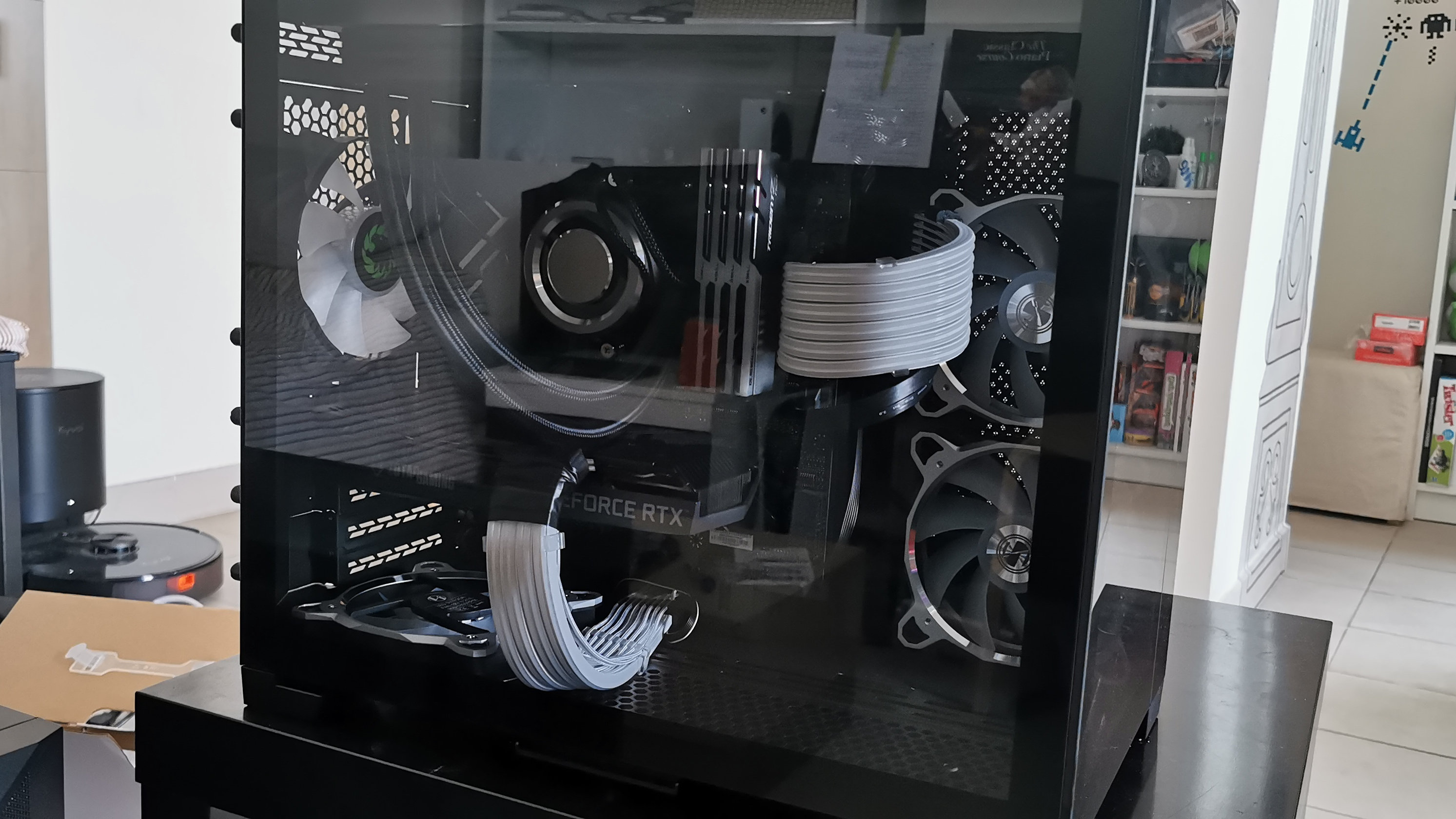
CPU: AMD Ryzen 7 3700X
Motherboard: Biostar B550GTQ
PSU: Dagger Pro 850W
Cooling: Lian Li Galahad AIO 360
Graphics: Zotac Gaming GeForce RTX 3070 Twin Edge OC
RAM: 32GB (4x 8GB) G.Skill @ 3,600MHz
Storage: 2x 1TB M.2 PCIe NVMe SSD
Fans: 3x Lian Li Bora Digital Silver 120mm
After everything was in place and we fired up the build, we then set to work on measuring temperatures in the case. In a 26C room, idle temperatures measured the internal case running at 33C, the GPU at 41C, and the CPU at 34C. During a quick session of gaming of about half an hour, temperatures climbed to 44C for internals, 55C for the GPU, and 63C for the CPU. These are fairly good temperatures to be running at, and we’re sure that further tweaking or other more sophisticated cooling systems will bring temperatures down even further.
Our last bit of advice for the O11D Mini is to take your time to do your research with what components you want to install in it. It might not be as simple as transplanting a current system directly over, especially if you forget about the SFX power and radiator requirements. It’s also a good idea to invest in quieter fans and other components, as this fairly open case will certainly make cheaper components quite audible.
Should I buy the Lian Li O11D Mini?
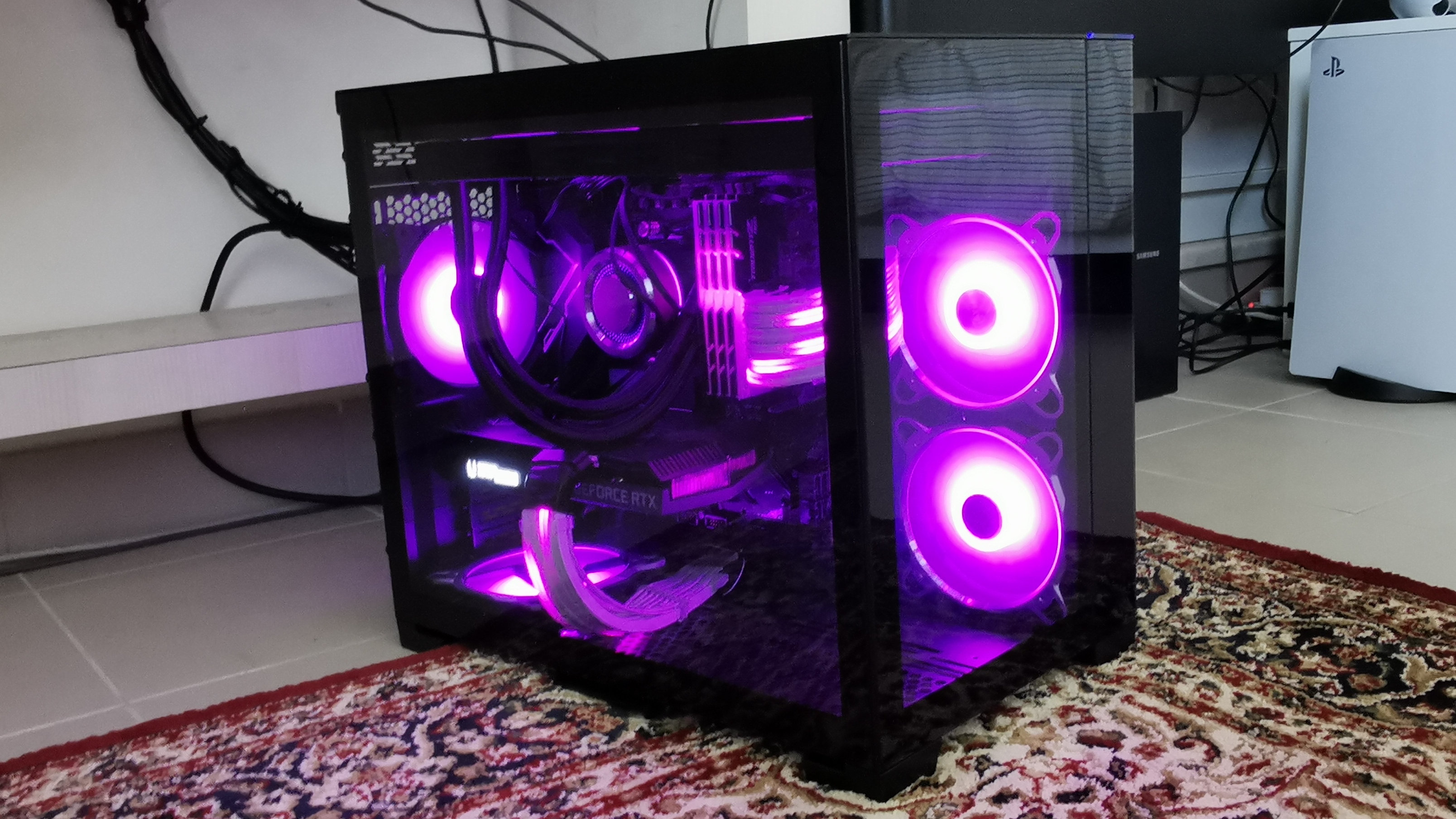
Buy it if…
You want a flexible case
The O11D Mini can grow or shrink based on what you put in it, so even if you start with a basic build and go from there, this case can accommodate changes easily.
You’re interested in water cooling
With accessories for holding pumps already included, this case is a great one to showcase some fantastic water-cooling builds.
You want a clean build
There’s plenty of space to tidy up cabling at the back, making for a very clean and appealing build to show off.
Don’t buy it if…
You’re in a rush to build
This case takes a bit of time to fit everything into, so it’s important you do your research first to check if your existing components can fit comfortably in here.
You want to mount a vertical GPU
The optional GPU kit at present only runs on PCIe 3.0, so you’re going to have to make that sacrifice if you want to show off your GPU in a vertical layout.
A former IT & Marketing Manager turned full time Editor, Nick enjoys reviewing PC components, 3D Printers, projectors, and anything shiny and expensive. He can also be found baking up a storm in the kitchen, which we are more than happy to encourage.
